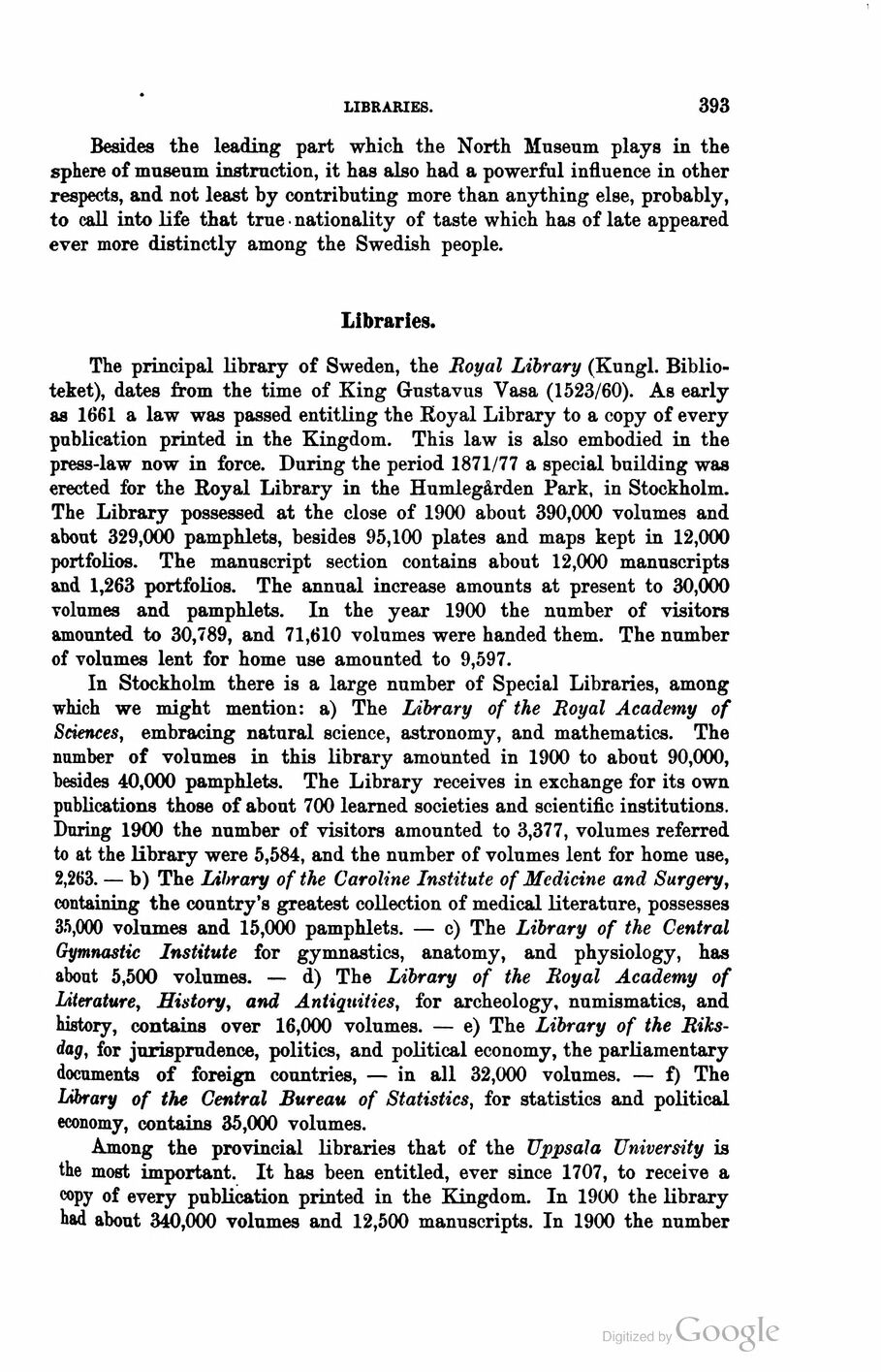
Full resolution (JPEG) - On this page / på denna sida - First part - IV. Education and Mental Culture - 7. Public Collections and Institutions for Science and Art. Periodical Literature. By B. Lundstedt, Ph. D., Librarian at the Royal Library, Stockholm - The North Museum and Skansen, by N. E. Hammarstedt, Amanuensis, North Museum, Stockholm - Libraries

<< prev. page << föreg. sida << >> nästa sida >> next page >>
Below is the raw OCR text
from the above scanned image.
Do you see an error? Proofread the page now!
Här nedan syns maskintolkade texten från faksimilbilden ovan.
Ser du något fel? Korrekturläs sidan nu!
This page has never been proofread. / Denna sida har aldrig korrekturlästs.
LIBRARIES.
393
Besides the leading part which the North Museum plays in the
sphere of museum instruction, it has also had a powerful influence in other
respects, and not least by contributing more than anything else, probably,
to call into life that true nationality of taste which has of låte appeared
ever more distinctly among the Swedish people.
Libraries.
The principal library of Sweden, the Royal Library (Kungl.
Biblioteket), dates from the time of King Gustavus Yasa (1523/60). As early
as 1661 a law was passed entitling the Royal Library to a copy of every
publication printed in the Kingdom. This law is also embodied in the
press-law now in force. During the period 1871/77 a special building was
erected for the Royal Library in the Humlegården Park, in Stockholm.
The Library possessed at the close of 1900 about 390,000 volumes and
about 329,000 pamphlets, besides 95,100 plates and maps kept in 12,000
portfolios. The manuscript section contains about 12,000 manuscripts
and 1,263 portfolios. The annual increase amounts at present to 30,000
volumes and pamphlets. In the year 1900 the number of visitors
amounted to 30,789, and 71,610 volumes were handed them. The number
of volumes lent for home use amounted to 9,597.
In Stockholm there is a large number of Special Libraries, among
which we might mention: a) The Library of the Royal Academy of
Sciences, embracing natural science, astronomy, and mathematics. The
number of volumes in this library amounted in 1900 to about 90,000,
besides 40,000 pamphlets. The Library receives in exchange for its own
publications those of about 700 learned societies and scientific institutions.
During 1900 the number of visitors amounted to 3,377, volumes referred
to at the library were 5,584, and the number of volumes lent for home use,
2,263. — b) The Library of the Caroline Institute of Medicine and Surgery,
containing the country’s greatest collection of medical literature, possesses
3.1,000 volumes and 15,000 pamphlets. — c) The Library of the Central
Gymnastic Institute for gymnastics, anatomy, and physiology, has
about 5,500 volumes. — d) The Library of the Royal Academy of
Literature, History, and Antiquities, for archeology, numismatics, and
history, contains over 16,000 volumes. — e) The Library of the
Riksdag, for jurisprudence, politics, and political economy, the parliamentary
documents of foreign countries, — in all 32,000 volumes. — f) The
Library of the Central Bureau of Statistics, for statistics and political
economy, contains 35,000 volumes.
Among the provincial libraries that of the Uppsala University is
the most important. It has been entitled, ever since 1707, to receive a
copy of every publication printed in the Kingdom. In 1900 the library
had about 340,000 volumes and 12,500 manuscripts. In 1900 the number
<< prev. page << föreg. sida << >> nästa sida >> next page >>